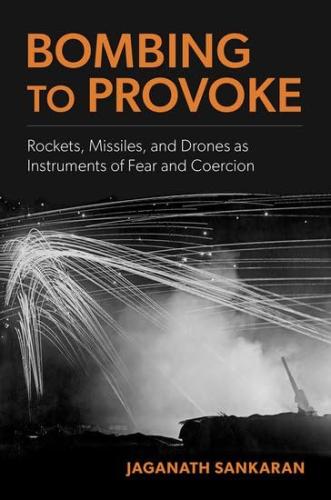Editor’s Note: Remarks delivered on December 5, 2012 at the
UAS TAAC Conference
, at the Hyatt Regency Tamaya Resort in Santa Ana Pueblo, New Mexico.
Unmanned aircraft systems (UAS) will only reach their full potential in this country if there is a robust civilian UAS industry. And, today, due to privacy concerns, there is the very real possibility that this potential will not be realized.
To help explain how it can be realized, I’d like to make three overall points in this talk.
First, UAS privacy is a genuine concern, but one that needs to be considered with a proper sense of perspective and balance. It’s important to restore that balance to the broader dialog.
Second, the Constitution will offer significantly more UAS privacy protection than is generally recognized. As we consider UAS privacy legislation at the federal, state, and local levels, it is critical not to forget the relevance and protective power of the Constitution.
In closing, as a third point I’ll offer a thought experiment on one reason why it’s so important to address and resolve privacy concerns sooner rather than later.
First, the importance of balance. It is certainly true that UAS raise privacy concerns.
But that is also true of the Internet, e-mail, mobile phones, GPS-equipped mobile devices, license plate cameras, and many other technologies.
In fact, if a pressing enough need were to arise, the activities of most people in this room on any given day in the past several years could be reconstructed in nearly complete detail – without the use of any data from UAS.
That doesn’t mean that we should deny that UAS could be misused in ways that violate privacy. Of course they can. And sometimes, they will. But that could also be said about the other technologies I mentioned, many of which pose a far greater threat to privacy than UAS. That perspective is too often missing from discussions of UAS privacy.
Next, let’s turn to the Constitution.
The Founders of this country didn’t have unmanned aircraft. But they understood privacy. That is in part why we have the Fourth Amendment, which has been a cornerstone of privacy from government intrusion since 1791. We also have the First Amendment, which has been interpreted as giving nongovernment entities, including but not limited to the press, the freedom to gather and publish information. However, that freedom has limits, and can end when the gathering of information crosses into a common law invasion of privacy. Those two amendments – the Fourth with respect to government-operated UAS, and the First with respect to non-government UAS – are too often left out of the UAS privacy discussion.
As someone who has spent a very significant amount of time studying the case law most relevant to UAS privacy, I believe that the constitutional framework for protection from UAS observations is significantly stronger than is widely recognized. That needs to be telegraphed to the wider community.
For example, in 1986 and again in 1989, the Supreme Court considered naked-eye observations of marijuana growing operations in back of a private residence from manned law enforcement aircraft. In both cases, the Court found no Fourth Amendment violation. But those rulings are narrow in scope, involving naked eye observations and “public navigable airspace.” They do not mean that all government UAS observations, no matter how invasive, will be constitutional.
In 2001, the Supreme Court issued its decision in a case called Kyllo. The case involved using a thermal imaging device – in a police car, not an aircraft – to measure the temperature of the outside walls of a house where marijuana was being grown inside There, the Court did find a Fourth Amendment violation. In doing so, the Court articulated a sort of rule that has sometimes been interpreted as problematic with respect to UAS privacy:
“Where, as here, the Government uses a device that is not in general public use, to explore details of the home that would previously have been unknowable without physical intrusion, the surveillance is a ‘search’ and is presumptively unreasonable without a warrant.”
This language has often been interpreted to suggest that use of a widely available technology to observe details of a home will of necessity be constitutional. According to this logic, once UAS are in “general public use”, there will be no constitutional limits placed on their use for surveillance operations by law enforcement agencies. But the Kyllo Court did not go that far. Rather, the Court stopped short of endorsing the constitutionality of observations of a home using widely available technology.
And what about non-government UAS and the First Amendment?
A 1998 California Supreme Court ruling is instructive in this respect. That case involved victims of a car accident who were subjected to video and audio recording (not from a UAS or even an aircraft), without their consent for a television program.
The California Supreme Court found that the television program producers’ activities were not protected under the First Amendment. The court held that a woman injured in the accident was “entitled to a degree of privacy in her conversations” with the medical personnel at the accident scene. The victim, in other words, had a reasonable expectation of privacy that trumped the First Amendment news gathering right of the program’s producers.
The Constitution has served us well across more than two centuries of technology advances. There is no reason to expect it to suddenly lose its protective power when domestic use of unmanned aircraft becomes common.
Finally, I’d like to offer a thought experiment on one reason why we need to avoid putting an entire civilian industry sector on hold by becoming mired in endless policy discussions about domestic UAS.
Imagine an alternate history that starts in 1930, less than three decades after the first successful sustained flights of heavier-than-air manned aircraft. Concerned about the possible negative privacy implications of manned flight, Congress enacts laws that severely restrict domestic aircraft flight operations. This leads to lower demand for aviation services and fewer sales of new aircraft. With no civilian market for their products, many American manufacturers are unable to generate sufficient revenue from their U.S. military sales, and end up closing their doors. Would-be entrants to the market are scared off by the lack of a market. Innovation on aircraft design continues elsewhere in the world, but largely grinds to a halt in the United States.
Now imagine that it is December 14, 1941. One week ago, the Japanese launched a surprise air attack on Pearl Harbor, killing thousands of Americans. Nazi Germany, having signed an armistice with France and obtained surrenders from Denmark, Norway, the Netherlands, and Belgium the year before, has marched east through the Soviet Union and is now battling at the doorstep of Moscow. Over the past few days the Nazis and their allies have declared war on the United States.
And as a consequence of the restrictive aviation laws passed in our hypothetical 1930, the United States in our hypothetical 1941 has become a world laggard, not a world leader, in aviation technology.
Reasonable people can disagree on how World War II would have looked without strong American aviation. But under almost any plausible scenario far more American lives would have been lost.
It would be very naive to assume that the United States will never again be forced into a large-scale military conflict against an adversary with highly advanced aviation capabilities. In fact, it is nearly certain to happen during this century, if not during our lifetimes, then likely during the lifetimes of our children.
If we want to lose that conflict, we should continue to delay the regulatory support needed to spur the growth of unmanned aviation in the United States. If we want to lose that conflict, we should continue to have a public policy dialog that focuses only on the negative uses of domestic unmanned aircraft, instead of also recognizing their positive applications. And if we want to lose that conflict, we should continue to send the rest of the world the loud and clear message that, whatever our technology advantage may be today in unmanned aviation, we may be on the road to abdicating it.
On the other hand, if we want to prevail in that conflict, we will need a healthy domestic civilian UAS industry that can help generate innovations in airframe design, automated flight control, information processing, and sense and avoid methods that will benefit both civilian and military applications. We will need the positive feedback cycle through which a healthy civilian UAS industry leads to more jobs and more people trained in this field, more entrepreneurial opportunities, and thus to more growth and innovation.
The good news is that we do not need to give up our leadership in aviation technology, which in the 21st century will often mean unmanned aviation technology. Maintaining that leadership will require a strong domestic market for UAS. And it will require that we address and resolve the privacy issue sooner rather than later.
Now, there may indeed be a role for new statutory restrictions involving data from UAS. As long as those restrictions don’t impede reasonable, non-privacy-violating use, they are worth serious consideration.
The UAS community can play a critical role in educating the broader public about the nature of UAS. That includes engaging in a respectful discussion with those who might today see only the negative aspects of this technology.
I believe that there is a win-win solution – one that fosters a thriving American UAS industry while also ensuring privacy is protected. In my view, a key component of that solution is already in place. It’s called the Constitution.
Thank you.


Commentary
Why We Need to Address Unmanned Aircraft Privacy Now
December 5, 2012